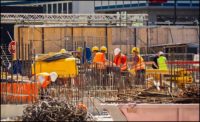ASHRAE Technical Committee (TC) 2.10, Resilience and Security, is a relatively new TC within ASHRAE, and its scope of work is defined accordingly: “TC 2.10 Resilience and Security is concerned with fundamental scientific and engineering design principles for the resilience of the built environments subjected to extraordinary events, including mitigating consequential damages, remediation, and recovery.”
I have been involved with Technical Group TG2 HVAC Security before it rolled into TC 2.10 and continue to remain involved with TC 2.10. I first got involved with HVAC security back in 2011, when I was introduced to TG2 and found the corresponding chapter in the 2011 ASHRAE HVAC Application Handbook interesting. Its focus of HVAC security was intriguing because, admittedly, it was a topic I had very little knowledge of.
Years earlier, I was contracted to work on the Pentagon Renovation Project, following the Alfred P. Murrah Federal Building bombing in Oklahoma and prior to the 9/11 attack. Like everyone else in America at that time, terrorism concerns were heightened. Before 9/11, the HVAC security chapter within the ASHRAE Handbook was primarily focused on “incidents” within a building, including chemical, biological, radiological, and explosive occurrences. I was familiar with these potential health and safety concerns because I had been the design engineer for industrial building and laboratory building projects in years past. That said, I never claimed to be a design authority on these topics. I would simply follow the advice of the design team consultant/specialist for issues pertaining to safety and security. At the time, I would not have used the words “HVAC security” when engineering a solution for a chemical spill or preparing for the potential of an explosion within an explosion-proof room. Instead, my view of security centered on recommending security monitors, cameras, etc.
All this changed as we entered the 21st century. Now, “resilience” and its mitigating consequential damages, remediation, and recovery, has become an integral part of security.
The most recent challenge associated with building resilience has been the impact of COVID-19 on buildings. Today, design engineers in new buildings or retrofit projects need to consider how a building is going to recover from more than just bomb or a hazardous spills — engineers must consider the ramifications of a deadly virus infiltrating the built environment.
HVAC engineers will continue to focus on the design aspects of a project, but additional consultants must be brought onto the team to contribute to the basis of design for building resilience. Experienced facility personnel may be asked to offer suggestions during the design phase regarding the potential reopening or recovery of a building following such an event. Design phases may require a building resilience consultant too. COVID-19 has introduced new design, build, operational, and maintenance facility challenges the building industry had not considered in years past. More on resilience next month. You may also flip over to Scott Campbell’s column within this month’s issue for more expertise on the topic.





